Call Queuing

Control Your Call Flow & Prevent Losing Phone Calls With Call Queuing
Place your inbound callers in a virtual queue while your agents are busy helping other callers with the call queuing feature. Greet callers with a welcome message and play them custom background music. Eliminate losing on important phone calls and control your call flow.
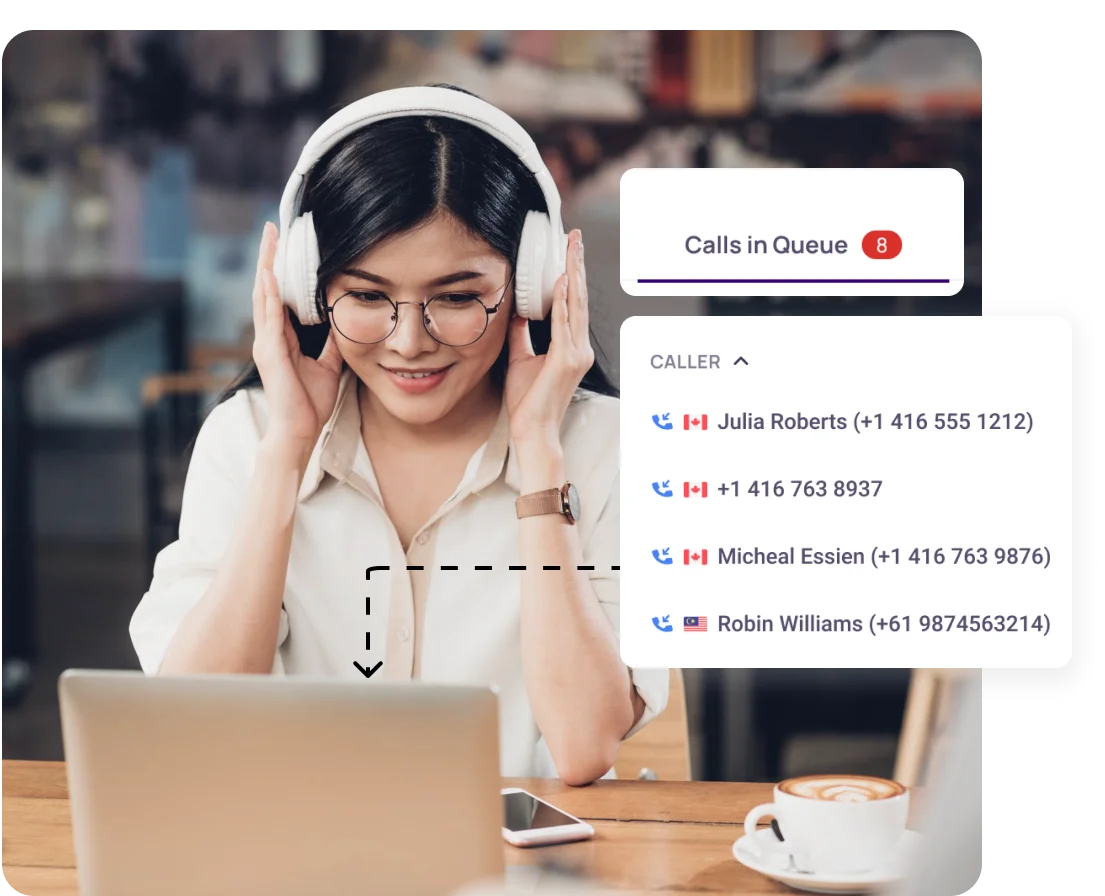


Get a Virtual Number
Get local, mobile, and toll-free virtual phone numbers from 100+ countries and expand your business worldwide.
Every customer that deals with business wishes to receive reliable customer support. They also expect agents to pick up their calls when they call. They don’t want to go through answered or disconnected calls.
But, in a scenario where a business experiences a high volume of calls, it can be difficult to handle all incoming calls. It will result in busy signals or missed calls.
That’s where the call queuing comes in.
Call queuing helps improve call management in a business. It puts a call on hold in a virtual queue when agents are busy on another call. When agents become available, the calls are routed to them. It makes sure things run smoothly for both customers and staff.
Now, let’s take a closer look at call queuing, including how it works, how it benefits businesses, and how it can make a big difference when handling many phone calls.
What is Call Queuing?
Call queuing is a feature in a business phone system that holds incoming calls in a virtual queue when there are no agents who can answer the calls right away. Callers wait in a queue instead of receiving a busy signal or getting disconnected until an agent is available. You can think of it as a waiting room where people wait until their time finally comes to receive service.
Call queuing helps organizations handle high call volumes efficiently. It ensures that every caller will receive assistance in the order they dialed in. Moreover, it helps improve customer experience by reducing the chance of callers abandoning their calls because of long wait times.
How Does Call Queuing Work?
Call queuing works by placing callers in a virtual line or queue based on when they call the call center. Early callers are placed higher on the order, while late callers are placed back.
When customers call when all agents are engaged in another call, the call queue feature puts them on a virtual queue. While they are waiting, custom background music will be played to keep them engaged and entertained. As soon as agents become available, the call at the front of the queue is automatically connected. This way, customers don’t have to face long wait times.
Benefits of Call Queuing in Call Centers & Businesses

Reduces customer wait time

Balanced workload distribution

Increased sales

Enhanced call management

Lower call abandonment rate

Improve customer experience
Types of Call Queuing
In round-robin call queuing, calls are sent to agents who have been idle the longest. This ensures that no agent gets overloaded while others have nothing to do. It also distributes calls evenly among agents.
In ring-all call queuing, when a call comes in, the call goes to all available agents simultaneously. This means all agents’ phones ring at the same time. The first agent to pick up the call handles it while the other phones stop ringing. This helps reduce wait times for callers and ensures that calls are answered promptly by any available agent.
In this method, calls are routed to available agents one by one in a predefined order until someone answers. The order can be assigned when agents mark themselves as available in the business phone system. If the first agent doesn’t pick up the call, the call moves on to the next in line. This process continues until someone picks up the incoming call.
It is similar to linear hunt. The only difference is that instead of sending calls to a single agent, it sends calls to a group of agents in a predefined order. Agents can be grouped based on their skills and performance, and the order of the group can be determined when they mark themselves as available in the phone system. If the first group doesn’t pick up the call, the call moves on to the next group, and so on.
In this type of call queuing, the caller is put on hold until an agent answers. Calls are parked in a central location, so any agent can pick them up instead of keeping the caller on hold. Agents can use Call Park if they don’t know which colleague or department should handle a call but need to transfer it.
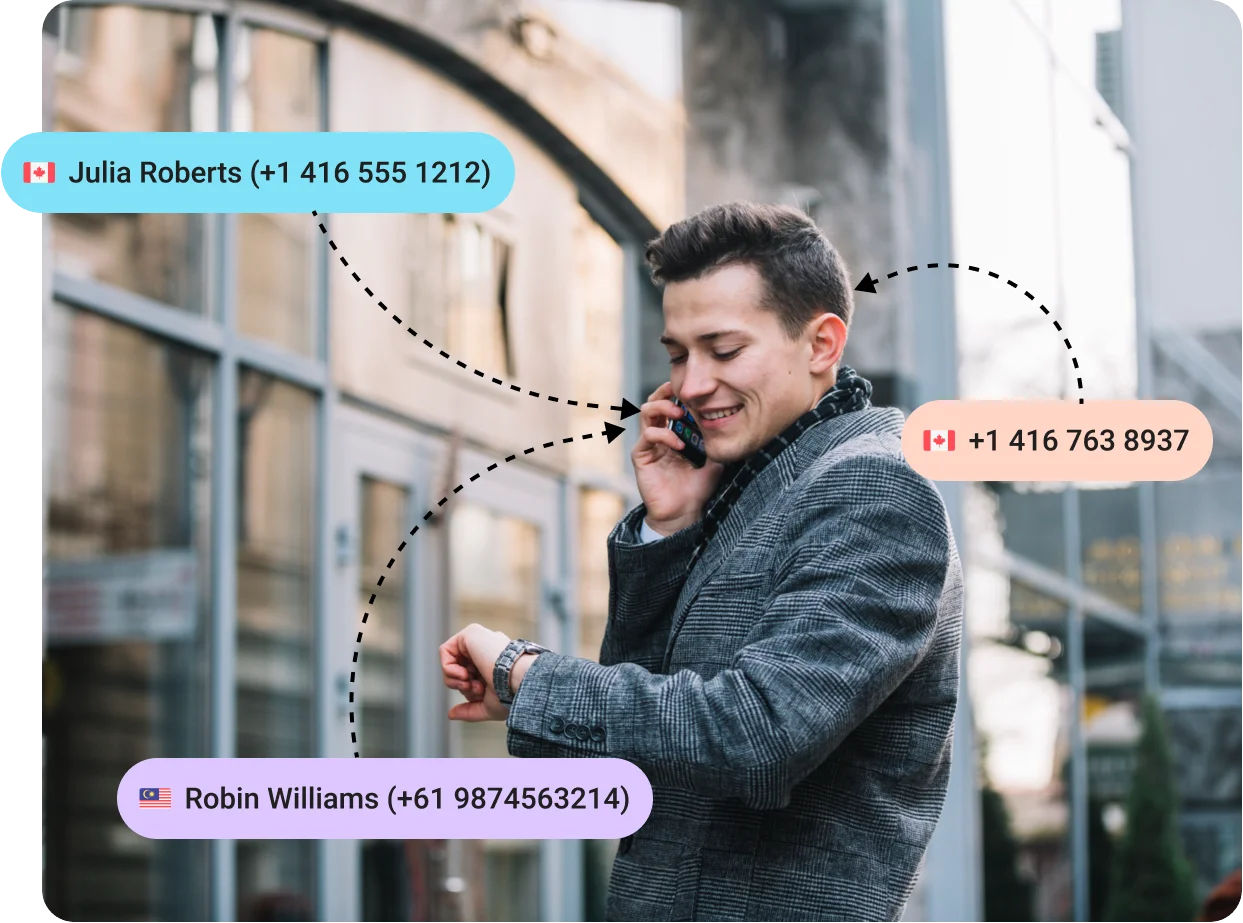
Types of Companies That Should Use Call Queuing
Call queuing helps companies of different sizes and types handle high call volumes efficiently. Whether it is a travel agency dealing with large booking appointments, a medical center dealing with scheduling medical appointments, or a bank handling client inquiries, call queueing can help them streamline incoming calls, reduce waiting times, and ensure customers receive timely assistance.
Financial institutions
Financial companies like banks, credit unions, and insurance companies should use call queuing. Call queuing helps these companies manage many incoming calls related to account inquiries, transactions, loan applications, and support issues. Customers also won’t have to deal with busy signals and calls being disconnected. This minimizes wait times and helps deliver a better customer experience.
Healthcare
Healthcare companies like clinics, hospitals, nursing homes, and pharmaceuticals should also use call queuing. These companies often receive many calls from patients regarding appointments, medical advice, or doctor availability. By using call queuing, healthcare companies can organize these calls in a line and ensure they’re answered in the order they’re received. This reduces the chances of patients waiting too long to speak with someone.
Travel
Call queuing can benefit travel companies, such as airlines, travel agencies, or online booking platforms. It helps them handle high call volumes during busy times, like booking seasons or during travel disruptions. It ensures customers calling for reservations, inquiries, or support don’t face long wait times or busy signals. By organizing calls in a queue, travel companies can efficiently distribute them to available agents, ensuring prompt assistance and better customer satisfaction.
E-commerce
E-commerce companies regularly receive a high volume of incoming calls related to the status of orders, shipping, and other customer queries. Call queuing helps them effectively manage high call volumes and route calls to available agents. They can rest assured that each customer call will receive fast and reliable support, minimizing the call abandonment rate and missed opportunities.
How to Set Up Call Queuing In KrispCall?
Setting up call queuing in KrispCall is easy. Simply log in to KrispCall with the correct login details, find the “Call Queue” option in the Number Settings, define call queue requirements, and you are done.
- Create a KrispCall Account and log in using the same credentials.
- From the left-hand side of the dashboard, select one of the numbers you currently own.
- Click on the ellipsis icon ( … ) and then on the “Number Setting” option.
- You'll find the “Call Queue” section in the Number setting.
- Define Maximum queue size, Maximum queue wait time, custom greeting message, etc., to set up your call queue.
- Once you are done, click the “Save Changes” button. After that, you are good to go.
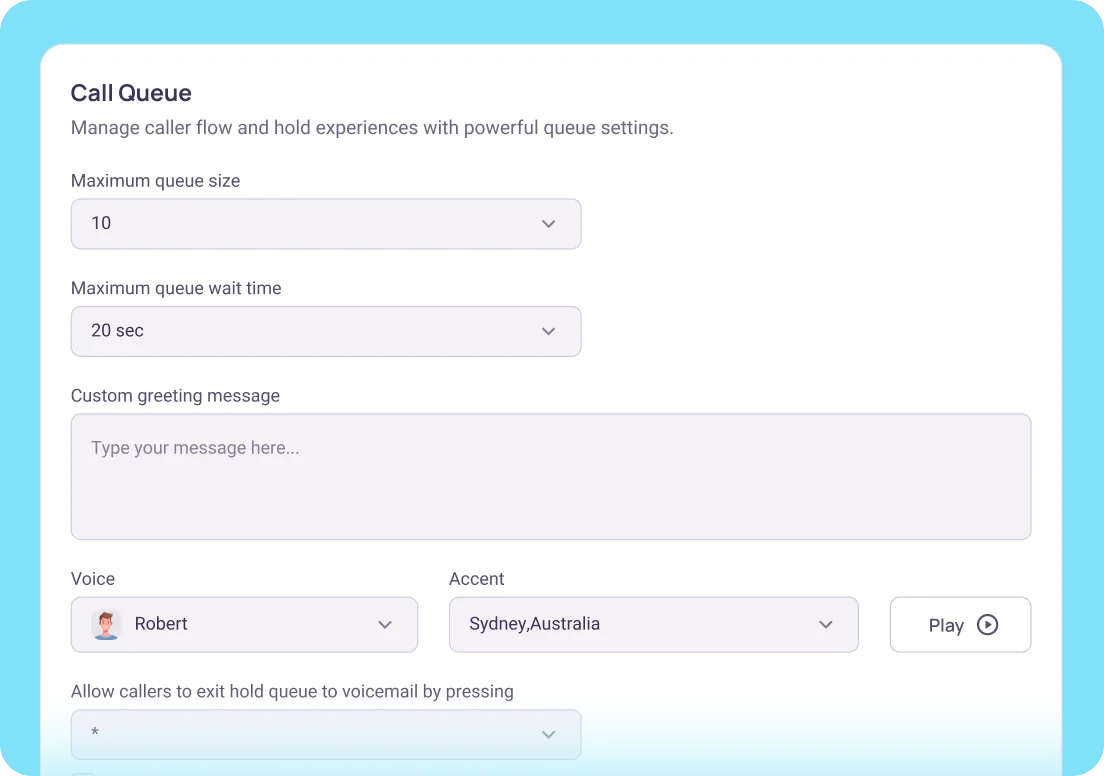
Get Cloud Phone With Call Queuing
Control your call flow & prevent losing phone calls using KrispCall – a cloud phone with an in-built Call Queuing feature
Using Call Queuing Feature in A Call Center: Best Practices

Create call groups

Use hold music

Optimize staff

Take advantage of IVR
More Features like Call Queuing
Call forwarding
Improve call management with call forwarding - never miss vital calls, boost agents’ productivity, and customer satisfaction.
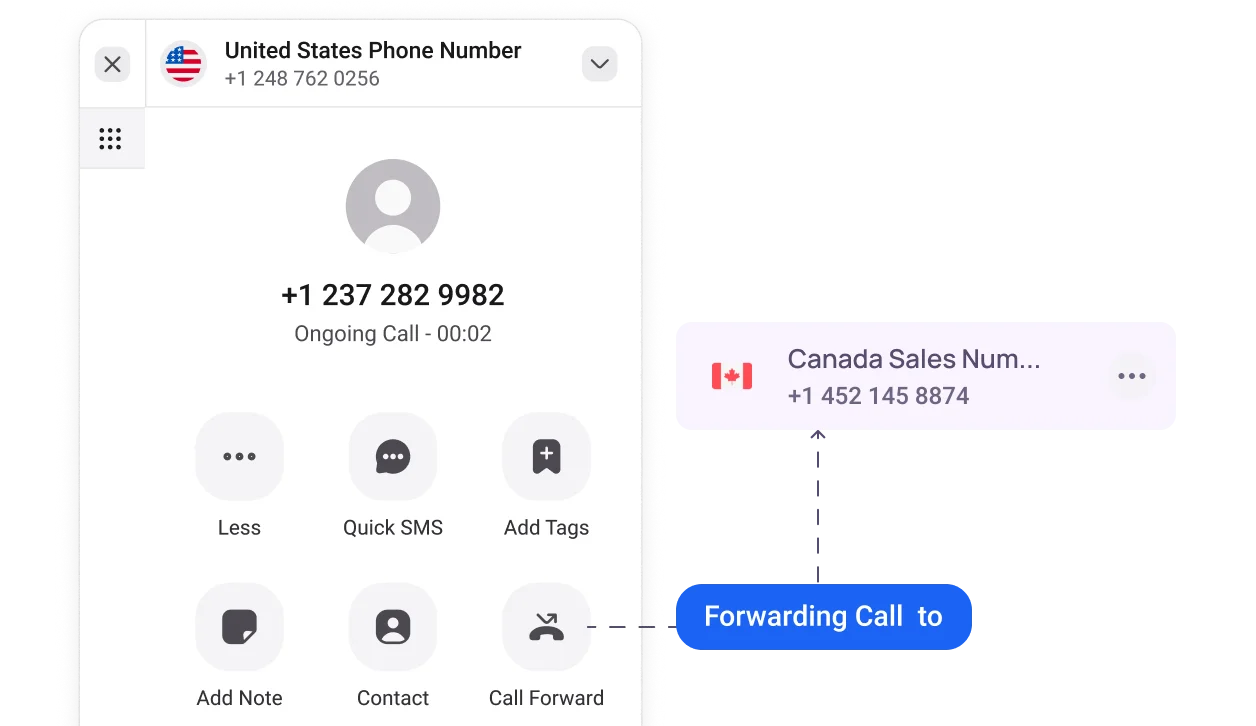
Phone Tree (IVR)
Leverage KrispCall's phone tree for efficient call routing, ensuring swift access to the right department for information.
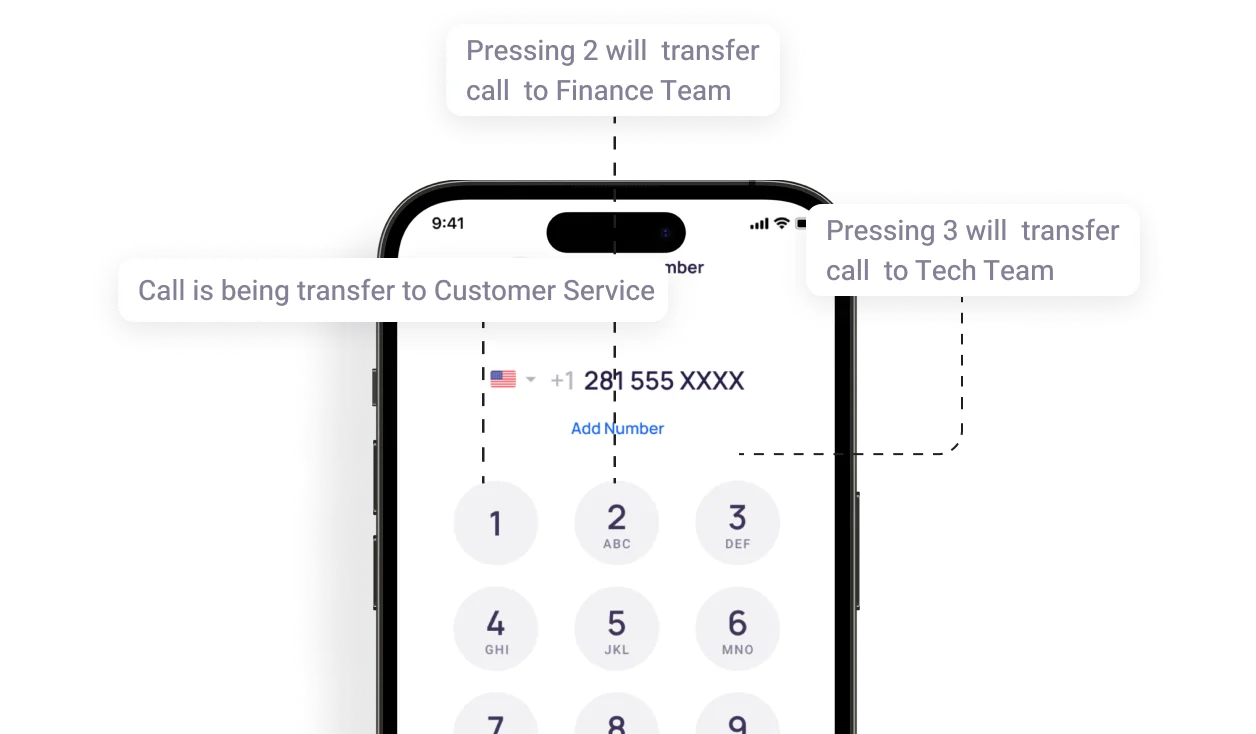
Call Transfer
Route calls instantly to expert agents, minimizing customer wait time for swift query resolution and improved customer support.
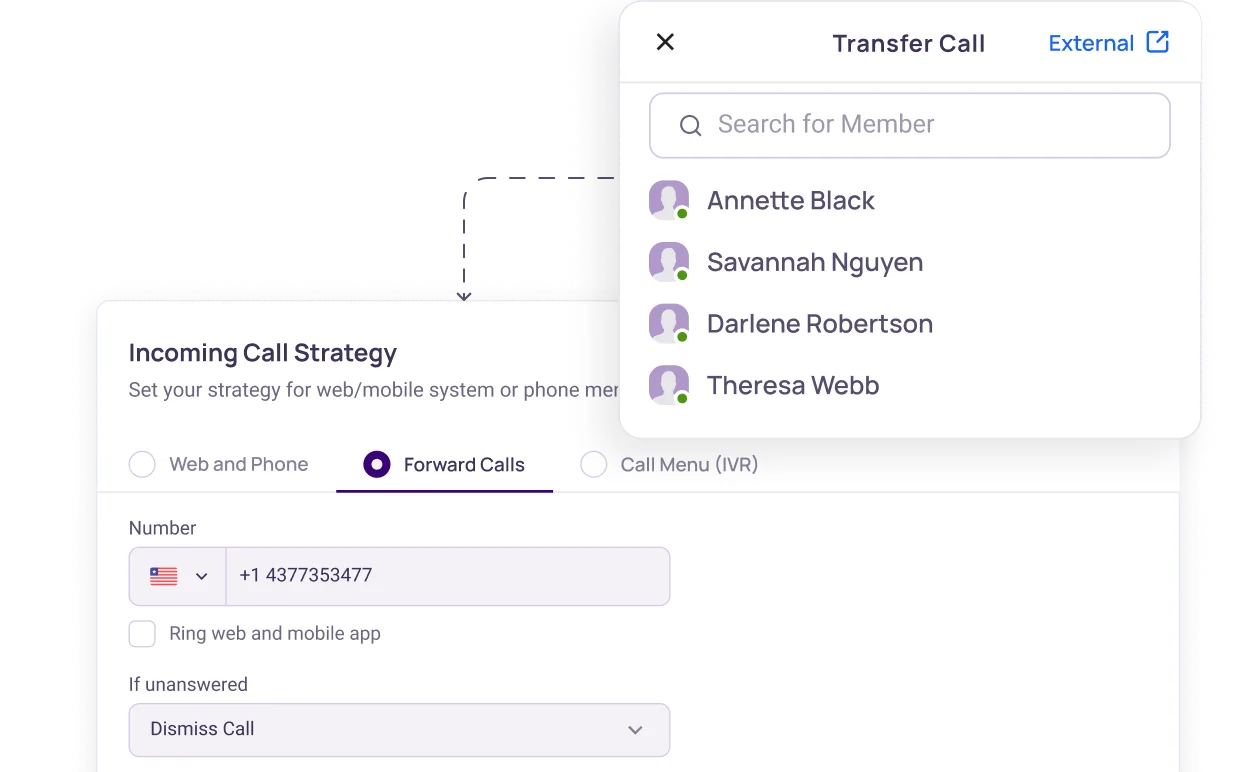
Frequently Asked Questions
A call waiting queue is a virtual queue in which a cellar waits for the agents to pick up the calls. Callers wait in a virtual queue when agents are busy on another call or when there are no agents available to answer the call.
When a phone is queued, it means that the call made from this phone is being put on hold in a virtual line or queue until an agent can attend to it. This occurs when all the agents are currently engaged with other calls; hence the incoming call awaits its turn to be answered.
The causes of long calling queues include;
- Outdated call center software
- Understaffed department
- Uneven agent allocation
- Poor management
- Peak seasons
- Unskilled agents
It is important to improve call queue management because it helps handle large volumes of phone calls without causing any calls to go unanswered. In addition, It helps minimize customer wait time, route calls to suitable agents/departments, and reduce the call abandonment rate.
Consider these tips to improve call queuing management:
- Use Interactive Voice Response (IVR) to provide a self-service option to callers.
- Upgrade to a modern business phone system.
- Give proper training and skills to agents.
- Implement time-based call routing.
IVR enables customers to interact with the business phone via phone dial pad or menu and get answers to the questions they are looking for or get directed to the right department without talking to live agents. Whereas a call queue puts caller incoming calls in a virtual line or queue when agents are busy on other calls.
You can decrease the abandonment rate in a call center by minimizing the call wait time.
A business can improve call management with a call queuing feature. Call queuing enables businesses to evenly distribute incoming calls to free agents, thereby minimizing the instances of dropped calls. In addition, by organizing calls in a virtual queue according to when they occur, call queuing shortens the waiting time. Overall, call queuing helps manage a large volume of phone calls effectively, eliminating the chances of missed calls and dropped calls.
With KrispCall, you can set up a call queuing feature for free. The call queuing feature is included in all three available pricing plans, so you don’t have to pay extra to get it.
KrispCall for Multiple Platforms
Stay connected no matter where you are. KrispCall is your constant companion, available on iOS, Android, as a WebApp, and Google Chrome Extension.


